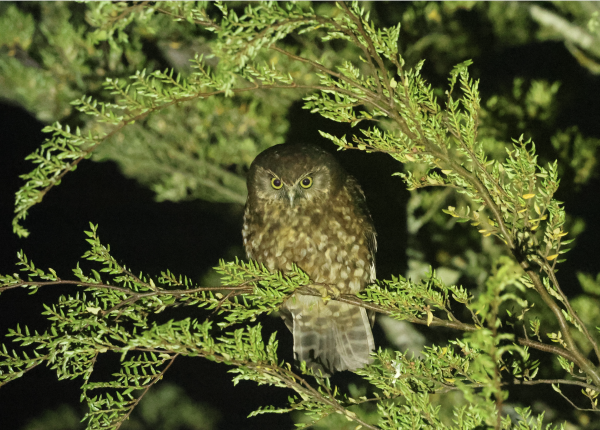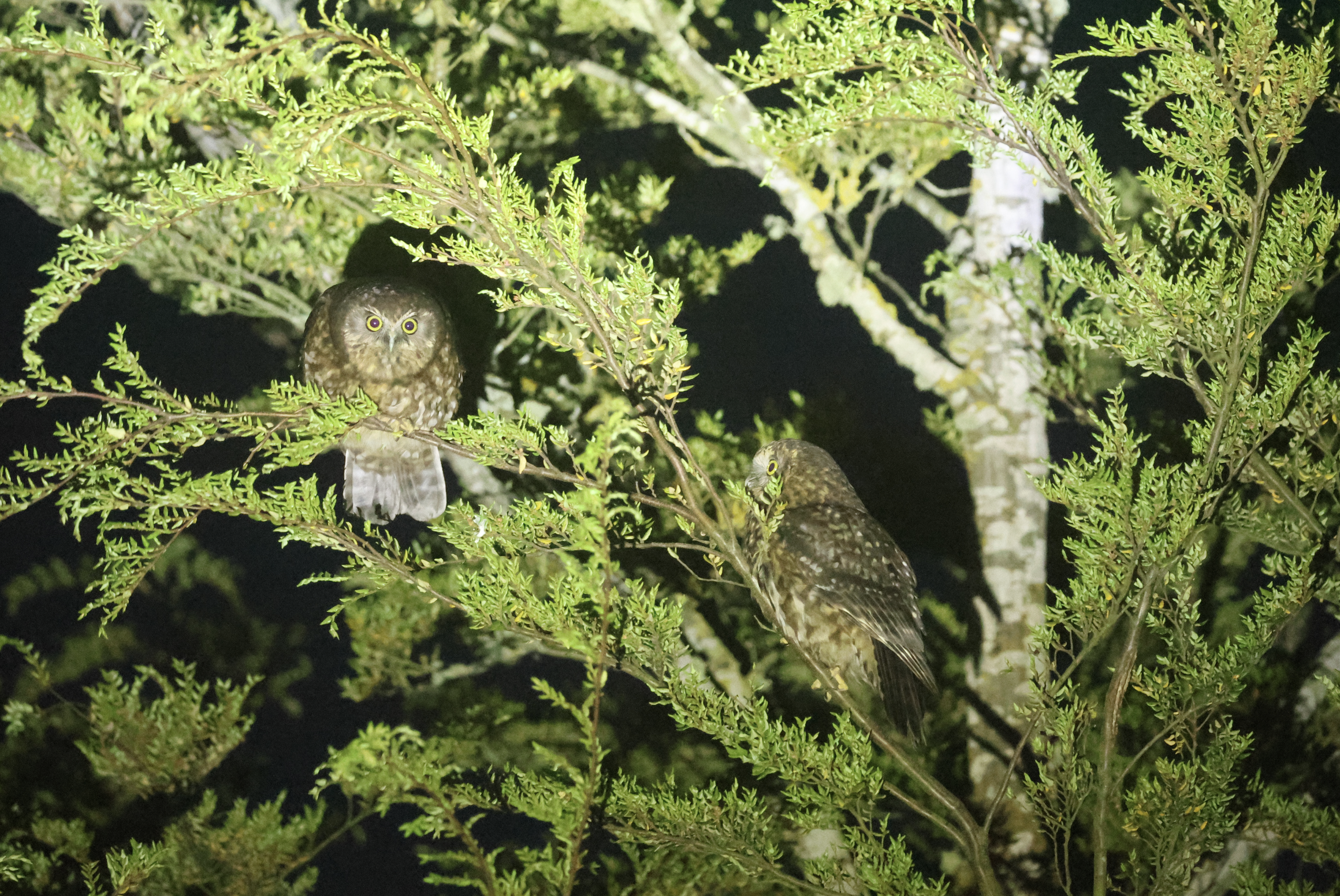Did you Know?
- Morepork were once found on Lord Howe Island, an Australian island in the Tasman Sea. However, sadly, it is now considered to be extinct there
- Morepork are now considered a New Zealand endemic, meaning they are only found in that country and nowhere else on Earth.
- These little owls are monogamous, meaning the male and female stay together for life
How The Peregrine Fund is Helping
Though The Peregrine Fund does not work directly with the Morepork currently, our efforts in scientific research, habitat conservation, education, and community development help conserve birds of prey around the world. We also supply literature to researchers from our avian research library, which helps scientists around the world gather and share important information on raptor conservation. Through the Global Raptor Impact Network, we help monitor and conserve the world’s raptors, while giving raptor researchers tools to more efficiently conduct their own studies while contributing to a global program.
Where They Live
Moreporks are found throughout both islands of New Zealand, and some satellite islands. It is mostly found in the lovely native forests of New Zealand, but can also be found in some altered habitat such agricultural fields, and some parks in urban areas.
What They Do
These birds can be quite vocal and have a number of lovely calls, the most common being a two-note "hoot, hoot."
Like many owl species, Morepork are primarily nocturnal, meaning they are mostly active at night. During daylight hours is when they get their rest, roosting under covered branches or in natural tree cavities.
Why They Need Our Help
Thankfully, the Morepork is currently classified as a species of Least Concern, which means that scientists believe their populations are still stable enough that we don't need to worry too much about them, at least in the near future. However, this doesn't mean that this small owl doesn't face any threats, especially when at least one subspecies found on Lord Howe Island is now considered extinct.
What They Eat
These small owls have quite a varied diet. They will often start hunting around dusk, just as night is setting in. They search for butterflies and moths, grasshoppers and crickets, caterpillars, spiders, cockroaches, beetles, and other invertebrates to snatch up in their talons either straight from the air or from the ground or a branch.
Apart from invertebrates, they will also take small rodents and birds.
Nest, Eggs and Young
Like most owls, Moreporks don't build their own nests. Instead, the females will lay their eggs in natural tree hollows or cavities. They will also occassionally nest on the ground and in dense epiphytes. Some Moreporks have also used nest boxes in which to lay their eggs.
The female will lay 1 to 2, and sometimes even 3 eggs. She will then spend the next month or so incubating and otherwise caring for her eggs. At this time, the male is responsible for finding food for himself and the female. When the owlets hatch, they are covered in a fluffy down and they are blind. They will quickly start to grow and will be ready to fly from the nest for the first time by around 38 days old.
Even after they fledge, the young owls need to be taken care of by the adults. They will spend several weeks in their parents' territory learning to hunt and to survive in the wild.
Morepork and the World Center for Birds of Prey
Though far out of the Moreporks range, the visitor center at our World Center for Birds of Prey includes owls among its avian ambassadors, including an Eurasian Eagle-owl and a Verreaux's Eagle-owl. This is a great chance to see owls up close and learn about the wonderful and interesting adaptations they have in order to survive in their respective habitats. There is also a touch table with owl feathers and other natural objects available for exploration. Around the center itself, sometimes wild owls can be seen including Great Horned Owls and Northern Saw-whet Owls.
References:
Kirwan, G. M., P. Pyle, J. del Hoyo, P.D. Olsen, J. S. Marks, and N. Collar (2022). Morepork (Ninox novaeseelandiae), version 2.1. In Birds of the World (N. D. Sly, Editor). Cornell Lab of Ornithology, Ithaca, NY, USA. https://doi.org/10.2173/bow.morepo2.02.1
Seaton, R.; Hyde, N. 2013 [updated 2022]. Ruru | morepork. In Miskelly, C.M. (ed.) New Zealand Birds Online. www.nzbirdsonline.org.nz











